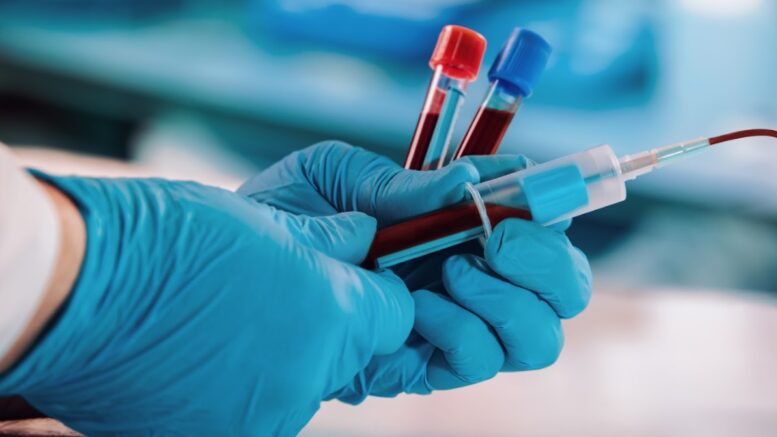Phlebotomists are blood-plasma technicians. In a hospital setting, they might be referred to as a phlebotomy technician or phlebotomist, but in the laboratory, they’re also known as a blood technician. Their main responsibilities are to safely draw blood for testing and transfusions. Phlebotomists may work in hospitals and clinical laboratories; however, there are many opportunities for those who have an interest in this field. The average salary of a phlebotomist is approximately $32,000 per year. That number will likely vary depending on location and experience levels. Because not all phlebotomists work in the medical field, there are other industries that also hire these professionals. Phlebotomist training programs vary greatly by state regulations and scope of practice. Many residency programs require at least one year of experience as an intern or junior resident prior to entering the program as a first-year trainee (intern). A typical phlebotomy training program usually lasts between 6–12 months.
What Does a Phlebotomist Do?
A phlebotomist’s main responsibilities are to safely draw blood for testing and transfusions. They also take vital signs, conduct patient check-in and discharge, and document laboratory tests. Phlebotomists typically work in a hospital setting. They may also work in a clinical laboratory where they draw blood for laboratory testing and transfusion of collected samples for test analysis.
Registered or Certified Phlebotomists (RCPs)
Many phlebotomists are not registered or certified phlebotomists (RCPs) but rather are required to be licensed to practice in the state where they reside. Those who have a license often work in a hospital setting, where the duties of their job require them to be trained by an RCP. Licensing requirements vary from state to state. Training programs for those who wish to become RCPs typically last between six and twelve months, with the average salary being $33,400 per year.
Registered Clinical Phlebotomy Technicians (RCCPs)
RCCPs are considered the most experienced phlebotomists who have gone through an intensive training process and are licensed to draw blood, perform venipuncture (injection/insertion of a needle into an artery or vein), and to deal with emergencies. They also have additional responsibilities such as managing a laboratory and maintaining standards in laboratory safety. Because they are a type of phlebotomist, there is much more expectation on their shoulders. They must work in accordance to their licensure, which includes the national requirements for quality assurance practices. As a result, this often means staying up-to-date on new technologies in the field as well as understanding how to respond when patient care is jeopardized. In terms of training, a popular one is this one that allows you to become a qualified phlebotomist in Brisbane.

Registered nursing blood-plasma program graduates
This is not a typical program. Instead of the traditional, in-classroom based training, this program uses a blended learning approach with an online platform. This is an accredited program and the curriculum includes both didactic and clinical teaching methods. In order to successfully complete this program, students are required to have at least one year of experience as an RN or LPN prior to entering the program. The average salary for a phlebotomist that has completed this program is $50,000 per year.
Other Training Options for Entry-level Phlebotomists
Those who are not interested in a medical-related phlebotomy program may want to consider getting specialty training. Some of the fields that offer specialty training are emergency medical services, law enforcement, and blood banking. Once again, these programs vary by state regulations and scope of practice.
Summer Internships for Experienced Individuals
If you have experience and are looking for a summer internship, you can also apply for a phlebotomy training program. Many programs will allow applicants with prior work experience to attend the program on a part-time basis. In addition to medical facilities, there are other industries that hire phlebotomists. These include the following: 1) Clinical laboratories 2) Blood banks and transfusion services 3) Healthcare administration 4) Healthcare marketing and communications 5) Governmental agencies (e.g., hospitals, prisons, and military)
Types of phlebotomist training programs
There are three types of phlebotomy training programs: 1. Internship Program 2. Clinical Phlebotomy Training Program 3. Phlebotomist Training Program What type of program is best for you depends on your location and preferred type of career path.
Self-Employed Phlebotomists
Many phlebotomists choose to work as self-employed phlebotomists. This option allows them to work when they want and set their own hours, without the restrictions of a traditional job. Some people may be hesitant to become self-employed, but this decision is worth it for many professionals who want flexibility in their career.
Conclusion
Phlebotomy is the process of drawing blood and/or removing blood components and returning them to the circulatory system. Phlebotomists draw blood samples, order and transport blood, and collect and store blood components. They also help with the management of blood transfusion services, patient education and informed consent, patient screening for infectious diseases, and laboratory testing. With the vast amount of job opportunities available in the field of phlebotomy, it makes sense to consider your options before you decide on a career.
